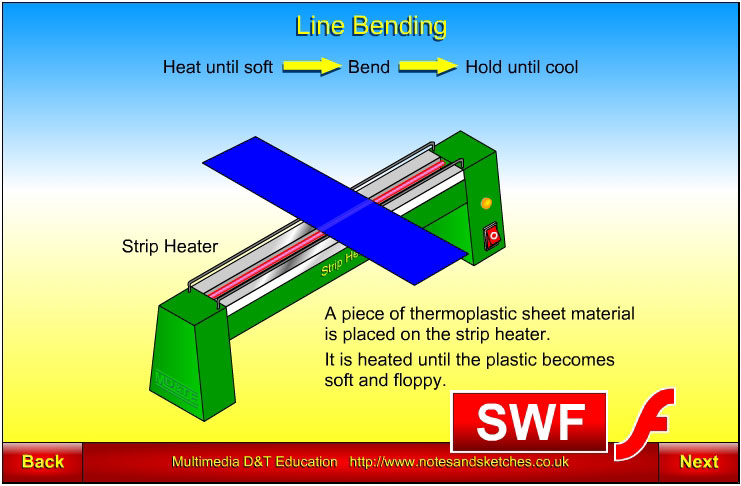 |
|
Click on the screenshot above to view the "Line Bending" animation by Laszlo Lipot |
|
|
|
IntroductionThermoplastic sheet materials such as acrylic can be softened by heat. When a thermoplastic sheet has been softened, it can be bent, twisted, rolled and stretched. After the thermoplastic has cooled down, it becomes rigid and remains in its new deformed shape. This makes thermoplastic sheet materials suitable for:
Line BendingLine bending involves heating a thermoplastic sheet material over a strip heater until it becomes soft and then bending it to the desired angle. The desired angle may be achieved by using a jig or former, or if the angle is not critical, simply by bending the thermoplastic sheet by hand and holding it until it cools. CLEAPSSPlease refer to CLEAPSS, Model Risk Assessments for Design and Technology in Secondary Schools and Colleges, Part 1.061 COSHH Regulations. |
| Click here to view the PDF version of this resource. | 
|
 |